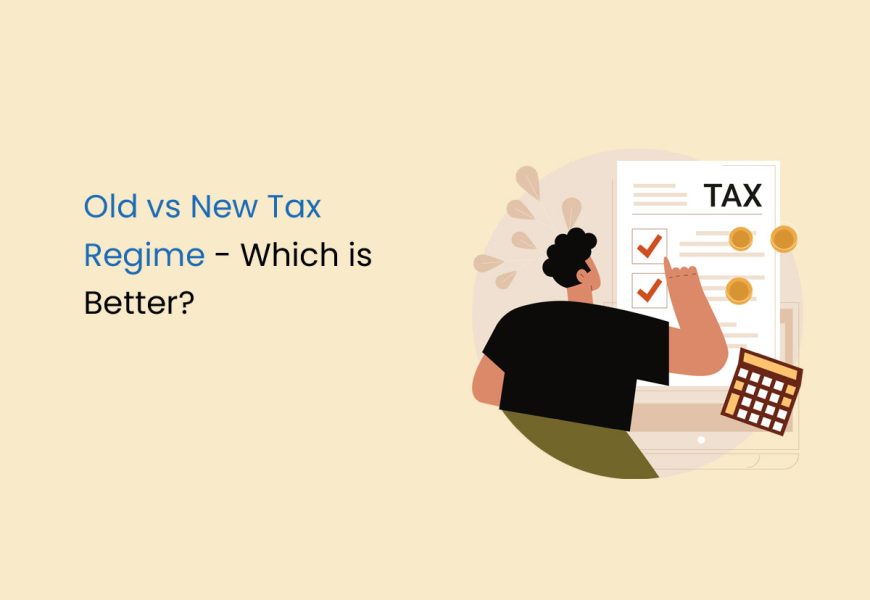The recent Budget 2023 has given rise to a myriad of uncertainties among taxpayers, prompting a crucial evaluation of the choice between the existing and the new tax regimes. The government’s clear push towards the adoption of the new regime is evident in the array of incentives introduced in the latest budget. While the new regime has become the default option, it’s noteworthy that the old tax regime will persist alongside it, signalling a transitional phase.
The Indian income tax system underwent a significant shift in the fiscal year 2020-21, introducing a new tax regime characterised by reduced tax rates coupled with a substantial curtailment of tax-saving opportunities. The 2023 Budget has further bolstered the new system with various incentives, underscoring the government’s commitment to facilitating its implementation.
For individuals contemplating the perennial question of the new regime versus the old regime in 2023, the decision hinges on a nuanced consideration of income slabs and individual financial scenarios. To make an informed choice, let’s read about the disparities between the tax rates of both regimes, explore variations in available deductions, and examine practical examples illustrating the impact of the new regime across different income brackets.
Taxpayers can gain a comprehensive understanding of the implications each regime holds for their financial landscape by juxtaposing these elements. Thereby empowering them to make judicious decisions aligned with their specific circumstances.
New Regime
The advent of the new tax regime in Budget 2020 brought about a restructuring of tax slabs, accompanied by concessional tax rates to provide relief to taxpayers. However, the initial reception of the new regime was tempered by the restriction on claiming various exemptions and deductions, including HRA, LTA, Section 80C, Section 80D, and others, making it less appealing to a substantial segment of taxpayers.
Recognising the need to incentivise the new regime’s adoption, the government unveiled five pivotal changes in Budget 2023. These modifications are strategically designed to address the concerns that hindered the widespread acceptance of the new tax system. Among these changes, a notable adjustment is the elevation of the tax rebate limit.
Revised Tax Rebate Limit
Under the new regime, taxpayers now benefit from a full tax rebate on income up to ₹7 lakhs, a significant increase from the previous threshold of ₹5 lakhs in the old tax regime. This translates to a scenario where individuals with an income of up to ₹7 lakhs are entirely exempt from paying any tax under the new tax regime, marking a compelling incentive for taxpayers to consider transitioning to the revamped system.
Tax Slabs
The tax slabs have been revised. This table provides a clear overview of the tax rates for various income slabs, facilitating a comparative analysis between the old and new tax regimes.
| Total Income | Rate of Tax | Old Tax Regime (until 31st March 2023) | New Tax Regime (From 1st April 2023) |
|---|---|---|---|
| ₹0 – ₹2,50,000 | – | – | – |
| ₹2,50,001 – ₹3,00,000 | 5% | 5% | – |
| ₹3,00,001 – ₹5,00,000 | 5% | 5% | 5% |
| ₹5,00,001 – ₹6,00,000 | 20% | 10% | 5% |
| ₹6,00,001 – ₹7,50,000 | 20% | 10% | 10% |
| ₹7,50,001 – ₹9,00,000 | 20% | 15% | 10% |
| ₹9,00,001 – ₹10,00,000 | 20% | 15% | 15% |
| ₹10,00,001 – ₹12,00,000 | 30% | 20% | 15% |
| ₹12,00,001 – ₹12,50,000 | 30% | 20% | 20% |
| ₹12,50,001 – ₹15,00,000 | 30% | 25% | 20% |
| >₹15,00,000 | 30% | 30% | 30% |
The tax exemption limit has been raised to ₹3 lakhs in both regimes. Under the old tax regime (until 31st March 2023), the tax rates are consistent with the established slabs. A streamlined structure is introduced in the new tax regime (from 1st April 2023), with progressively increasing tax rates for higher income slabs.
Standard Deduction and Family Pension Deduction
Salary Income: The standard deduction of ₹50,000, previously exclusive to the old regime, is now applicable to the new tax regime as well. This, coupled with the rebate, extends the tax-free income threshold to ₹7.5 lakhs under the new regime.
Family Pension: Individuals receiving a family pension can claim a deduction of ₹15,000 or 1/3rd of the pension, whichever is lower.
Reduced Surcharge for High Net Worth Individuals: The surcharge rate on income exceeding ₹5 crores has been reduced from 37% to 25%. This reduction translates to a decrease in the effective tax rate for high-net-worth individuals from 42.74% to 39%.
Higher Leave Encashment Exemption: The exemption limit for non-government employees regarding leave encashment has experienced a substantial increase, rising from ₹3 lakhs to ₹25 lakhs, marking an eightfold escalation.
Default Regime: Commencing from the fiscal year 2023-24, the new income tax regime will be established as the default option. To adhere to the old regime, taxpayers must submit a form during return filing. The flexibility to switch between the two regimes will be available on an annual basis.
List of Significant Exemptions in the New Tax Regime
- Income from Life Insurance
- Agricultural Income
- Standard Reduction on Rent
- Retrenchment Compensation
- Leave Encashment on Retirement
- VRS Proceeds up to Rs 5 lakhs
- Death cum Retirement Benefit
- Scholarship Money for Education, etc.
This compilation provides an overview of the diverse exemptions and deductions available under the old tax regime, fostering a comprehensive understanding of the financial landscape for taxpayers.
Old Regime
The old regime refers to the tax system in place before the advent of the new regime. Within this framework, taxpayers have access to over 70 exemptions and deductions, encompassing benefits such as HRA (House Rent Allowance) and LTA (Leave Travel Allowance). These deductions play a pivotal role in mitigating taxable income and subsequently reducing overall tax liabilities.
Among the multitude of deductions available, Section 80C stands out as one of the most popular and substantial. This section permits a significant reduction in taxable income, allowing taxpayers to avail themselves of deductions up to Rs. 1.5 lakh. This provision has been historically recognised for its generosity and widespread utilisation.
The taxpayers are presented with a pivotal choice between adhering to the old tax regime, with its plethora of deductions and exemptions and transitioning to the new tax regime. This decision-making flexibility underscores the government’s recognition of individual financial preferences and circumstances, empowering taxpayers to align their tax strategy with their specific needs.
Key Exemptions and Deductions in Old Tax Regime
- Leave Travel Allowance (LTA): An allowance to cover travel expenses during leave.
- House Rent Allowance (HRA): An allowance for meeting rental expenses.
- Standard Deduction: Salaried individuals were entitled to a standard deduction of Rs 50,000.
- Deductions under Section 80TTA/80TTB: Pertaining to interest from savings account deposits.
- Entertainment Allowance Deduction and Professional Tax: Applicable for government employees.
- Tax Relief on Home Loan Interest (Section 24): Benefit for self-occupied or vacant property.
- Deduction from Family Pension (Section 57): A deduction of Rs 15,000 is permitted under clause (ii a).
- Tax-Saving Investment Deductions (Chapter VI-A): Deductions under various sections including 80C, 80D, 80E, 80CCC, 80CCD, 80DD, 80DDB, 80EE, 80EEA, 80EEB, 80G, 80GG, 80GGA, 80GGC, 80IA, 80-IAB, 80-IAC, 80-IB, 80-IBA, etc. Popular investment options include ELSS, NPS, PPF, with tax breaks on insurance premiums.
- Deduction under Sub-Section (2) of Section 80CCD: Employer’s contribution to an employee’s NPS account.
- Section 80JJAA: Applicable for new employment.
Note: Tax liability may arise if an employee’s contribution to EPF and NPS exceeds Rs 7.5 lakh in the financial year.
Breakeven Threshold for Choosing Between New and Old Tax Regimes
The Breakeven point signifies the income level at which the two tax regimes have no disparity in tax liability.
- Higher Deductions and Exemptions in Old Regime: If the total eligible deductions and exemptions in the old tax regime surpass the breakeven threshold corresponding to your income level, adhering to the old regime is recommended. This is because the benefits accrued from deductions and exemptions in the old regime outweigh the advantages of the new tax regime.
- Lower Breakeven Threshold: Conversely, if the breakeven threshold is higher than the total deductions and exemptions available in the old regime for your income level, transitioning to the new tax regime becomes a more advantageous choice. In this scenario, the new regime offers greater simplicity and potentially reduced tax liability.
The breakeven analysis provides a practical guide for taxpayers, enabling them to make a judicious decision aligned with their financial circumstances. By comparing the total tax benefits under both regimes, individuals can navigate the complexity of tax planning and choose the regime that optimally suits their needs.
Old vs New Tax Regime
Making the decision between the old and new tax regimes involves considering key calculations:
- If your total deductions are up to ₹1.5 Lakhs, then the new regime is more beneficial.
- If your total deductions exceed ₹3.75 Lakhs, then the old regime proves more advantageous.
- If your total deductions lie between ₹1.5 Lakhs to ₹3.75 Lakhs, it is dependent on individual income levels.
Deciding whether the new or old tax regime is better is nuanced, and there’s no universal answer. The choice should be guided by an assessment of tax savings, deductions, and exemptions available in the previous tax system.
The decision to switch to the new tax regime or retain the old one must align with your unique financial circumstances. This assessment ensures a tailored approach to optimise your tax strategy based on the available benefits in each regime.
Old vs New Tax Regime: An Example
This table simplifies the tax calculation for an income of Rs. 8,00,000 under both the old and new tax regimes, offering a clear comparison of the total tax liabilities, including the standard deduction and applicable cess.
| Particulars | Tax under Old Regime (In Rs.) | Tax under New Regime (AY 2024-25 onwards) (In Rs.) |
|---|---|---|
| Salary | 8,00,000 | 8,00,000 |
| Less: Standard Deduction | (50,000) | (50,000) |
| Taxable Income | 7,50,000 | 7,50,000 |
| Total Tax | (0%*2,50,000) + (5%*2,50,000) + (20%*2,50,000) | (0%*3,00,000) + (5%*3,00,000) + (10%*1,50,000) |
| 62,500 | 30,000 | |
| Cess @4% | 2,500 | 1,200 |
| Total Tax Inclusive Of Cess | 65,000 | 31,200 |
In Conclusion
Individuals frequently grapple with the distinctions between the old and new tax regimes. The new income tax structure caters to those seeking simplicity with minimal deductions, especially non-salaried individuals like consultants exempt from Section VIA benefits. Additionally, older individuals without a pension, ineligible for the Rs.50,000 standard deduction, may find the new regime more convenient. Conversely, seniors, reliant on interest income, can leverage Section 80TTB, claiming Rs.50,000 as an interest deduction, making the old tax regime potentially more favorable for them.
Each regime presents its own set of pros and cons. The traditional tax framework encourages a savings-oriented approach, while the new system is advantageous for lower-earning employees, simplifying tax processes and reducing the risk of fraud. However, owing to individual variations in deductions and exemptions, a meticulous comparison is imperative for each person to determine the most suitable regime.
FAQs about Old vs New Tax Regime
Which tax regime is better for 10 lakhs salary?
If your income is Rs. 10 lakhs, the old tax regime is beneficial only if your tax-saving investments exceed Rs. 2,62,500. Otherwise, the new regime is preferable.
Which tax regime is better for 12 lakhs salary?
For a salary of Rs. 12 lakhs, the old tax regime is favorable if your tax-saving investments exceed Rs. 3,00,000. Otherwise, the new regime is more suitable.
Which tax regime is better for 15 lakhs salary?
The choice between the old and new regimes for a salary of Rs. 15 lakhs depends on your tax-saving investments:
- Old regime: If tax-saving investments > Rs. 3,58,000
- New regime: If tax-saving investments < Rs. 3,58,000
Which tax regime is better for 20 lakhs salary?
For an income of Rs. 20 lakhs, the optimal regime depends on your tax-saving investments:
- Old regime: If tax-saving investments > Rs. 3,75,000
- New regime: If tax-saving investments < Rs. 3,75,000
Which tax regime is better for 25 lakhs salary?
For a salary of Rs. 25 lakhs, the decision hinges on your tax-saving investments:
- Old regime: If tax-saving investments > Rs. 3,75,000
- New regime: If tax-saving investments < Rs. 3,75,000
Which tax regime is better for 30 lakhs salary?
For an income of Rs. 30 lakhs, opt for the new regime if your tax deductions are less than Rs. 3,75,000. Otherwise, choose the old tax regime.
Which tax regime is better for 50 lakhs salary?
If your income is Rs. 50 lakhs, the old regime is beneficial if your total tax-saving deductions are Rs. 3,75,000 or more. Otherwise, opt for the new tax regime.
| Particulars | Tax under New Regime (In Rs.) | Tax under Old Regime (In Rs.) |
| Salary | 50,00,000 | 50,00,000 |
| Standard Deduction | (50,000) | (50,000) |
| Deductions | (3,75,000) | - |
| Taxable Income | 45,75,000 | 49,50,000 |
| Tax due on above | 12,32,400 | 12,32,400 |
This table illustrates the tax comparison for an income of Rs. 50 lakhs under both the new and old tax regimes, including standard deductions and applicable tax-saving deductions.
Which tax regime is better for home loan?
Opting for the old tax regime is advantageous when considering home loans as it allows you to avail tax benefits under Section 24, 80C, and 80EE/80EEA. Unfortunately, these provisions are not applicable in the new tax regime introduced in Budget 2023. It's important to note that the eligibility for these home loan tax exemptions is restricted to properties with a stamped value of up to Rs. 45 lakh.
What is the benefit of choosing new tax regime?
The new tax regime offers the advantage of a standard deduction, coupled with a full rebate for individuals earning up to INR 7 lakh annually. Therefore, individuals with an annual income exceeding INR 7 lakh must make a judicious decision when choosing between the new and old tax regimes.
Disclaimer: The intent of this article is to inform. For the latest and the most accurate information and numbers, please visit the government website.














